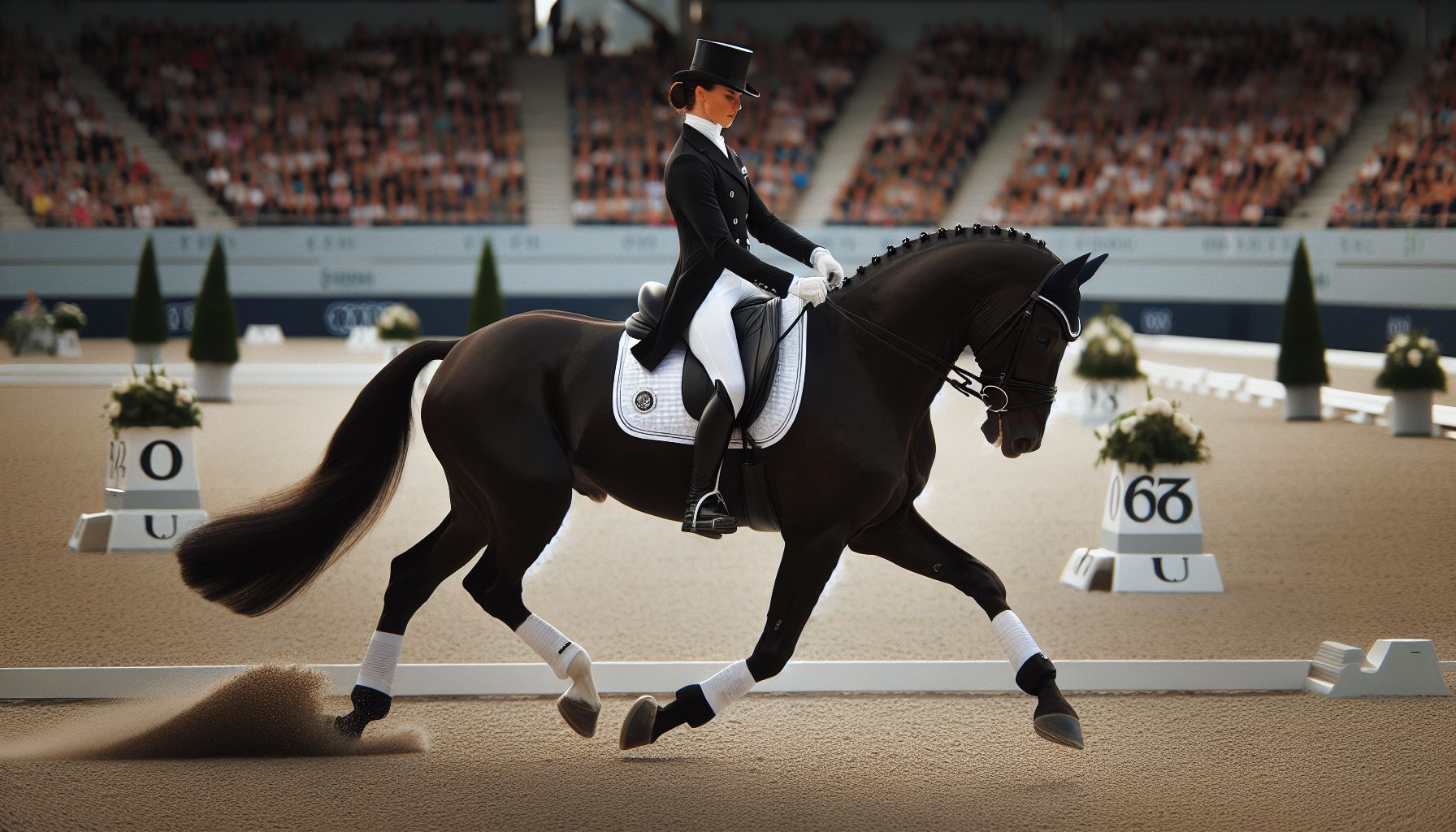Introduction
When it comes to the equestrian world, there is a discipline that stands out for its elegance and precision: dressage. Whether you are a horse lover, a rider, or simply curious about this beautiful sport, you will surely find joy in learning about the artful dance between horse and rider that is dressage. In this blog post, we will explore the origins, principles, and beauty of dressage, all while demystifying this fascinating discipline.
Origins of Dressage
Dressage, derived from the French word “dresser” meaning “to train,” has deep historical roots that can be traced back to the military. In ancient times, cavalry horses needed to be agile, obedient, and responsive to the rider’s commands in order to succeed in battle. Thus, the training techniques and movements of dressage were developed to ensure the harmony and effectiveness of horse and rider on the battlefield.
Over time, dressage evolved into a competitive sport and an art form, with its own set of rules and standards. Today, dressage is recognized as one of the three Olympic equestrian disciplines, along with show jumping and eventing.
The Fundamentals of Dressage
At its core, dressage is about achieving harmony, balance, and communication between horse and rider. It emphasizes precise movements, obedience, and the development of the horse’s natural athletic ability. Dressage tests are performed in an enclosed arena, with the horse and rider demonstrating a series of prescribed movements at various gaits.
The most basic and essential gait in dressage is the walk, followed by the trot and canter. These gaits are then refined into more advanced movements, such as the collected, medium, and extended gaits. Additionally, dressage tests include lateral movements, such as shoulder-in, haunches-in, and leg yield, which showcase the horse’s flexibility and obedience.
The Beauty of Dressage
What makes dressage truly remarkable is the seamless connection between horse and rider. As they perform intricate movements with grace and precision, it becomes evident that dressage is not merely a display of physical prowess, but a partnership built on trust and understanding.
Imagine watching a dressage performance. The horse, with its powerful yet graceful movements, seems to be dancing to an invisible melody, perfectly in sync with the subtle aids and cues of the rider. Every muscle and every step is executed with such finesse that it can take one’s breath away. The artistry lies in making the complex look effortless, and the elegance lies in the synergy between two beings.
The Dressage Pyramid
To achieve this level of partnership and elegance, dressage follows a training pyramid. The pyramid consists of six elements that build upon each other, creating a solid foundation for horse and rider:
- Rhythm: The purity and regularity of the horse’s gaits.
- Suppleness: The horse’s flexibility and ability to move freely.
- Contact: The connection between the rider’s hands and the horse’s mouth.
- Impulsion: The energy and forward movement generated from the horse’s hindquarters.
- Straightness: The alignment of the horse’s body and the correct bend around turns.
- Collection: The ultimate goal of dressage, where the horse becomes more balanced, engaged, and responsive.
Each element is interdependent and requires time, patience, and training to master. By focusing on the pyramid, riders can steadily progress through the levels of dressage, fostering harmony and elevating their connection with their equine partner.
Dressage as a Journey
Dressage is not merely a sport or a series of movements; it is a lifelong journey of discovery. It teaches riders patience, perseverance, and the art of effective communication. It demands a deep understanding and appreciation for the horse, as well as a willingness to constantly improve oneself.
While dressage may appear effortless in the arena, it is the result of countless hours of training, practice, and discipline. It requires riders to continually refine their riding position, strengthen their core, and develop their feel and timing. Yet, every step in this journey brings a new level of fulfillment, as horse and rider continue to grow and learn together.
Conclusion
Dressage is much more than just a discipline within the equestrian world – it is a celebration of the beauty and harmony that can be achieved between horses and humans. As we have explored, dressage is the embodiment of grace, precision, and communication. It showcases the lifelong bond that can be forged between rider and horse, and the endless possibilities that can arise from this partnership.
Whether you are a rider, an admirer, or someone seeking to explore the wonders of the equestrian world, dressage offers a captivating experience. So, let’s dive into this enchanting discipline, where horses and riders come together, moving as one, creating a symphony of elegance and skill.
